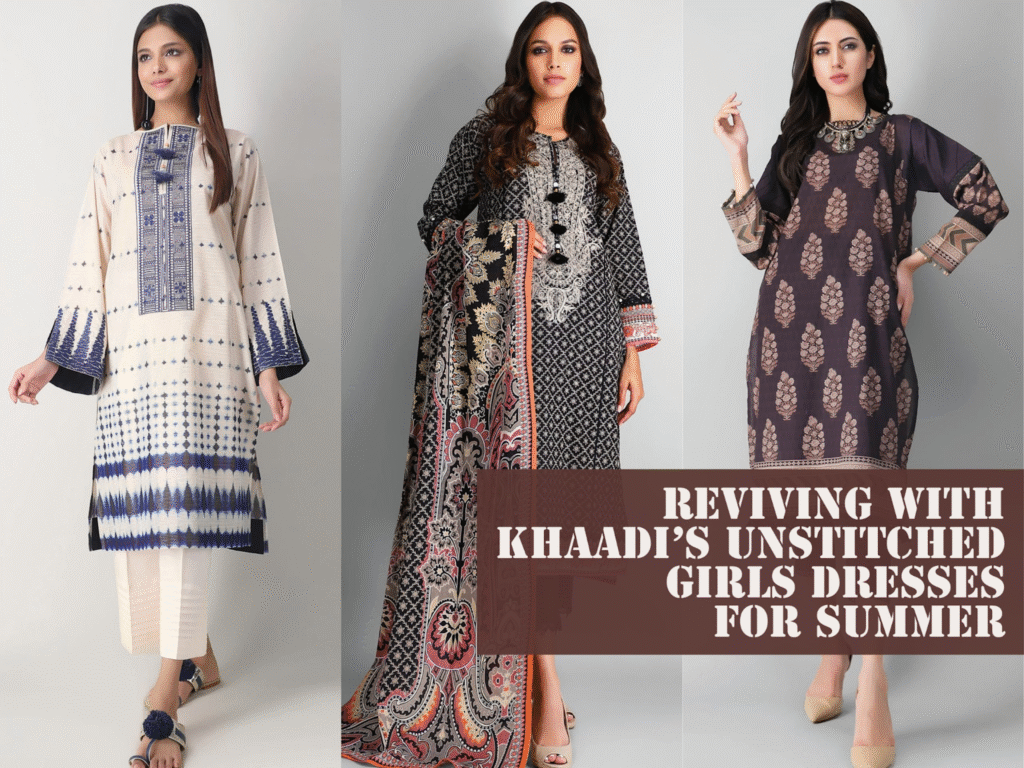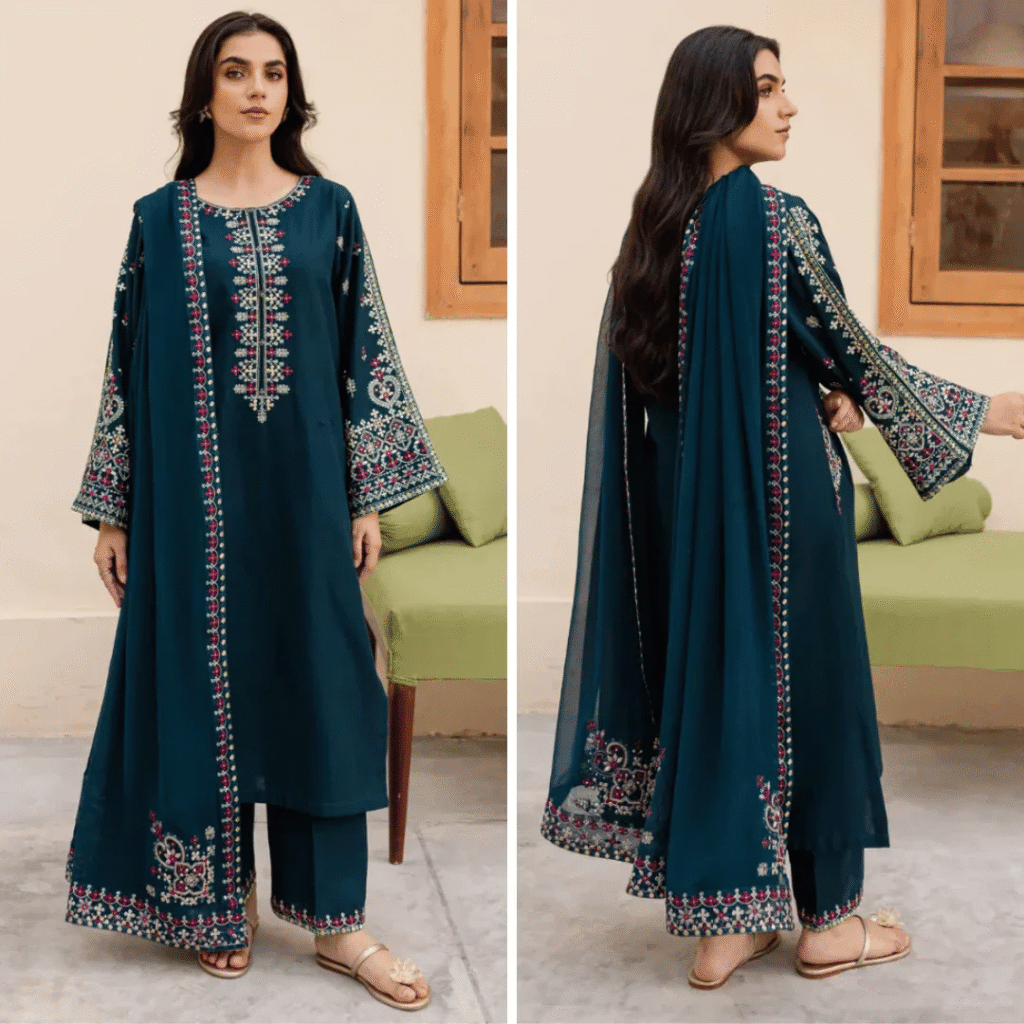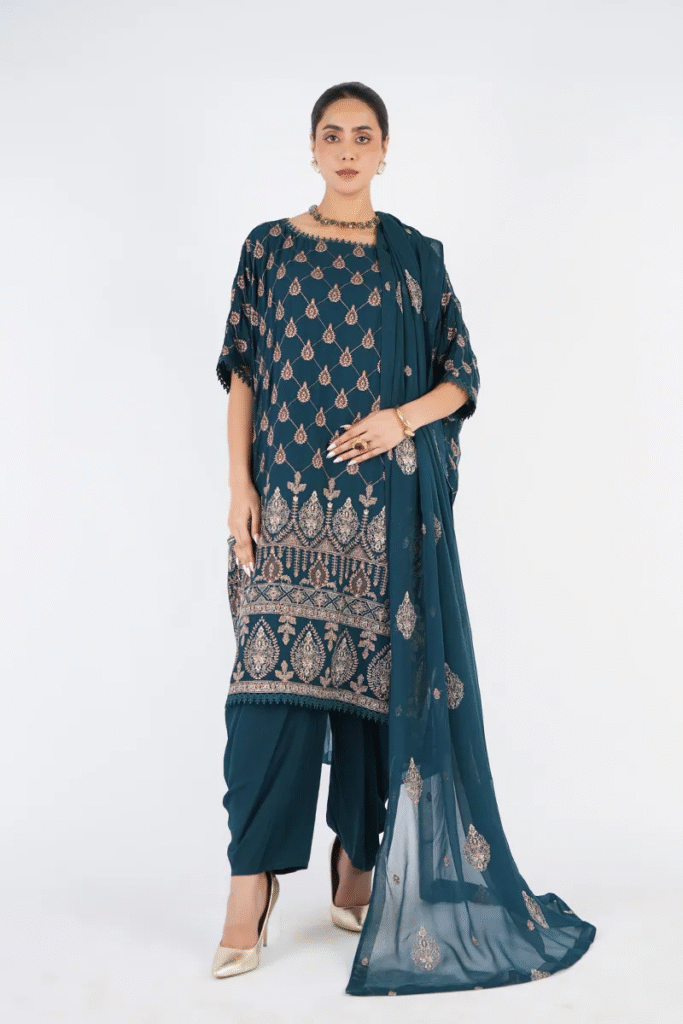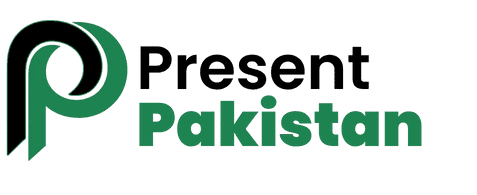Introduction
Sustainable fashion in Pakistan has shifted from being a niche to being a necessity.As global dialogue around climate change, pollution, and ethical practices has grown, Pakistani consumers and brands are also saying yes to organic and environmentally friendly fabrics. Moreover, eco fabrics such as organic cotton, linen, bamboo blends, ribbed cotton, and French terry have become popular choices because they are breathable, durable, and environmentally accountable. In addition, these fabrics not only reduce environmental harm but also encourage conscious consumption.
“In this article, we will explore how Pakistani fashion is embracing sustainability. Moreover, we’ll highlight the top brands leading the charge and explain why eco-friendly fabrics matter more than ever as we approach 2025. In addition, you’ll discover upcoming trends, rising consumer demand, and practical advice on how to bring sustainable fashion into your wardrobe.”
Table of Contents
- What is Sustainable fashion?
- Why are organic & eco-friendly fabrics important?
- Executive Summary on sustainable fashion in Pakistan.
- Focus keyword: Sustainable Fashion in Pakistan
- 6 Best Pakistani Brands Using Organic Fabrics.
- Khaadi
- Generation
- Sapphire
- Wind chime
- Rastaah
- House of Parichae
- local artisan labels
- Consumer Behaviour driving eco-friendly fashion
- Sustainable fabrics in your everyday wear.
- Barriers to the promotion of sustainable fashion
- The future of eco-friendly fabrics in Pakistan
- Call to action
- FAQs.
- People also ask.
1. What Is Sustainable Fashion?
Sustainable fashion includes apparel that has been designed, manufactured, distributed, and used sustainably and ethically. Sustainable fashion is about:
- Eco-fabrics
- Fair labor practices
- Recycling and upcycling
- Reducing carbon footprints
Key Points:
- Sustainable fashion is about style with responsibility.
- Sustainable fashion reduces the environmental harm of fast fashion.
The Importance of Organic and Eco-Friendly Fabrics
Organic fabrics like cotton and linen are grown without harmful pesticides and chemicals. They are also softer, safer on the skin, and biodegradable.
Key Insights:
- Organic fabrics are good for the planet and good for health.
- Eco-friendly fabrics are breathable and durable.
3. A Review of Sustainable Fashion in Pakistan
The Pakistani fashion industry is shifting towards more sustainable options; sustainability is in focus from boutiques in Lahore to fashion week in Karachi.
Key points:
- Local designers are engaged in sustainability.
- Consumers want more ethical and sustainable options.
Sustainable Fashion in Pakistan
Sustainable fashion in Pakistan has advanced quite a lot in the last 5 years. Fashion brands are now using natural fabrics like organic cotton, French terry, and bamboo blends in their collections. With an increasing number of people being aware of sustainability and eco-conscious style, the change to more sustainable clothing is also being supported by a generation wide awake to the realities of the world. Specifically, Gen Z and Millennials are demanding eco-conscious style.
Key Points:
- -Trends in the focus keyword indicate growing interest in eco-friendly clothing
- -Pakistan is catching up with the world on sustainability.
Organic textiles with top brands in Pakistan
Khaadi is producing collections with organic cotton and eco-friendly production to help divert waste.

Summary of Features:
- Has sustainable certification for their natural dyes
.
- Has a range of affordable organic cotton dresses.
Generation commits to promoting ethical labor while also supporting sustainable cotton practices.
With a focus on sustainability, Generation promotes ethical labor and encourages the use of organic cotton.Marketing campaigns focus on women artisans.

Takeaways:
- They are conscious of fair trade.
- They are advocates of slow fashion.
Sapphire
Sapphire seasonally introduces collections of capsules like linen, bamboo, and organic cotton blends.

Key takeaway:
- Cheap, eco-friendly capsule collections
.
- These collections are appealing to the younger public.
Breeze
Bareeze specializes in high-quality, sustainable products featuring handwoven fabrics centered on what Bareeze defines as the brand ethos of well-made and reuse of clothing to reduce waste.

Important Notes:
- – Handloom textiles: Balance is the emphasis of the handloom to keep the
- Tradition is part of the weave with other sustainable production ways.
- – Tradition and sustainability are woven together.
Rastaah
Rastaah is the leading streetwear brand in Pakistan, with a focus on sustainability with organic cotton and eco-friendly production.
Key Points:
- The brand is known globally for sustainable streetwear.
- The brand appeals primarily to Gen Z consumers.
House of Parichae
Harnesses zero-waste fashion & supports artisan communities.
Key Points:
- – Slow and mindful fashion advocates.
- – Sustainable luxury wear.
- House of Parichae
- Harnesses zero-waste fashion & supports artisan communities
Key Points:
- – Slow and mindful fashion advocates
.
- – Sustainable luxury wear.
Local Artisan Labels
Small-scale designers and artisans in Pakistan are embracing eco-friendly fabrics. This ultimately leads to a reduction of synthetic waste.
Key Points:
- Sourcing handcrafted pieces supports sustainability
- Promotes Pakistan’s eco-fashion identity.
Consumer Behavior Influencing Sustainable Fashion
When it gets hotter in the summer, consumers look for clothing made of more breathable fabrics like linen or organic cotton. Gen Z and Millennials support thrift stores and upcycling, as they participate in a consumer-products culture that promotes the use of secondhand goods.
Key Takeaways:
- Gen Z is at the forefront of the sustainable shopping culture.
- Thrift stores and upcycling are also on the rise.
Sustainable Textiles for Everyday Apparel
Pakistani consumers are increasingly choosing eco-friendly textiles for everyday items like kurtas, lawnmowers, and casual clothing.
Crucial Elements:
- Cotton and linen are the most common materials for summer clothing.
- Eco-friendly textiles ensure both comfort and style.
. The Challenges of Promoting Sustainable Fashion
Challenges still exist despite progress:Organic textiles are more expensive
- Limited consumer awareness.
- lack of robust, long-lasting supply chains.
- Important Points: Raising awareness is crucial.
- The affordability issue must be addressed.
Pakistan’s Potential for Sustainable Textiles
The eco-friendly clothing market is growing rapidly.With the support of regional designers, artisans, and eco-aware consumers, Pakistan has the potential to emerge as a leader in South Asia’s sustainable fashion industry.
Crucial Details:.
- Innovation and awareness are linked to future growth.
- The use of sustainable textiles is growing in popularity.
The Most Frequently Asked Questions
What does sustainable clothing mean in Pakistan?
Sustainable fashion in Pakistan incorporates eco-friendly production methods, ethical labor standards, and organic fabrics such as cotton and linen.
Q2. Give an example of some sustainable fabrics.
Sustainable fabric includes organic cotton, French terry, linen, blends of bamboo, and ribbed cotton. Q3: Is it economically affordable for Pakistan to procure sustainable fabrics?
Certainly, several companies, including Sapphire and Khaadi, are in fact launching affordable collections made with sustainable fabrics.
Q4. Why are Gen Zers turning towards sustainable fashion?
Gen Z feels strongly for the Earth, thrift stores, and ethical fashion.
Q5. What are the major challenges faced by Pakistan’s sustainable fashion industry?
The high price, poor supply chain, and lack of awareness are the challenges faced foremost.
People also ask about (PAA).
PAA 1: Pakistan’s sustainable fashion businesses might be recognized by?
Look for openness in labor practices, natural material use, and certifications. Companies like Generation, Sapphire, and Rastaah highlight their eco-conscious lines.
PAA 2: Which is better, organic cotton or conventional cotton?
Yes, natural cotton is cultivated free of pesticides; therefore, it is better for the skin and the earth. Furthermore, it needs less water than conventional cotton.
PAA 3: Is it suitable holiday clothing?
Naturally! Brands like Bareeze and House of Parichae offer celebratory collections that combine sustainability with tradition by means of organic and handwoven materials.
PAA 4 Where can Pakistan’s sustainable textiles be found?
Local artisan markets and renowned brands like Khaadi, Sapphire, and Generation help you to get sustainable collections.
PAA 5: Why is sustainable materials’ appeal growing?
Since they give comfort, style, and eco-conscious benefits, they appeal to a new generation of discerning customers.
Concluding remarks
“Sustainable fashion in Pakistan is not just a passing trend; it represents the future of the industry. With large corporations adopting environmentally friendly practices and consumers making more mindful choices, the fashion landscape is steadily moving in a greener direction. At the same time, Pakistan is emerging as a leader in South Asia’s eco-fashion innovation, blending cultural heritage with modern sustainability by using eco-friendly textiles such as bamboo, linen, and organic cotton.”
Request for Action
Supporting companies that put sustainability first is a good place to start if you’re enthusiastic about a greener future. Visit Present Pakistan to find more informative articles about Pakistan’s development, sectors, and trends.







